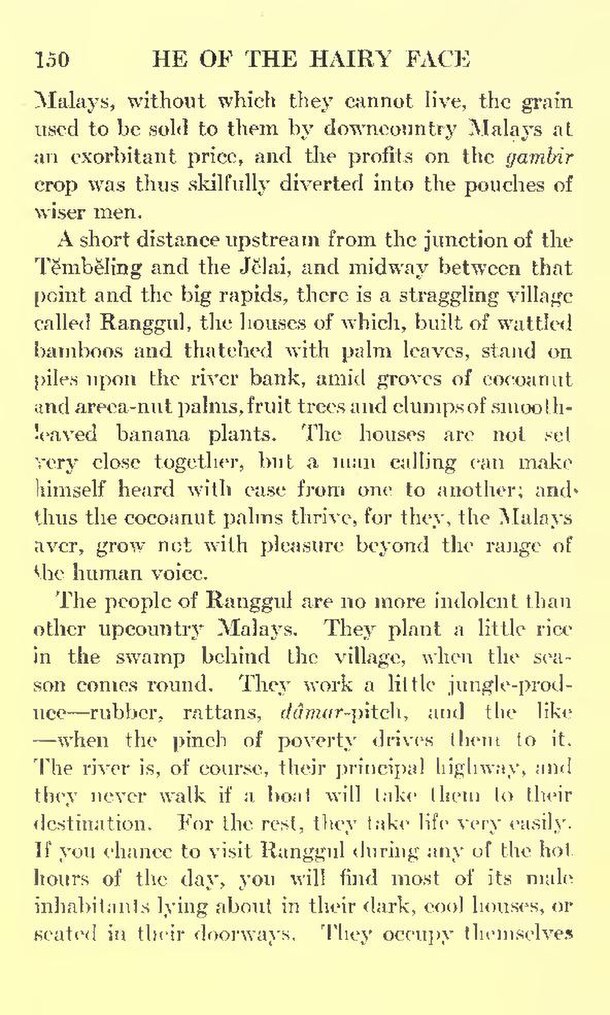Malays, without which they cannot live, the grain used to be sold to them by downcountry Malays at an exorbitant price, and the profits on the gambir crop was thus skilfully diverted into the pouches of wiser men.
A short distance upstream from the junction of the Těmběling and the Jělai, and midway between that point and the big rapids, there is a straggling village called Ranggul, the houses of which, built of wattled bamboos and thatched with palm leaves, stand on piles upon the river bank, amid groves of cocoanut and areca-nut palms, fruit trees and clumps of smooth-leaved banana plants. The houses are not set very close together, but a man calling can make himself heard with case from one to another; and thus the cocoanut palms thrive, for they, the Malays aver, grow not with pleasure beyond the range of the human voice.
The people of Ranggul are no more indolent than other upcountry Malays. They plant a little rice in the swamp behind the village, when the sea- son comes round. They work a little jungle-produce—rubber, rattans, dâmar-pitch, and the like—when the pinch of poverty drives them to it. The river is, of course, their principal highway, and they never walk if a boat will take thetu to their destination. For the rest, they take life very easily. If you chance to visit Ranggul during any of the hot. hours of the day, you will find most of its male inhabitants lying about in their dark, cool houses, or seated in their doorways. They occupy themselves
